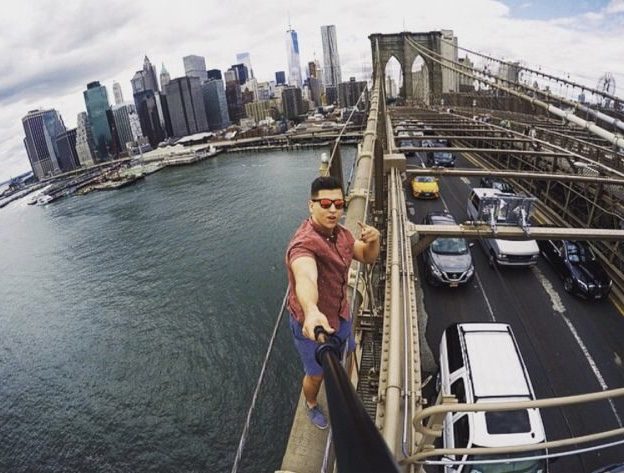
02 Nov ‘Death-by-Selfie’ is becoming an increasing problem worldwide
259 people have been reported dead by selfie related incidents, a 2018 global study has shown.
The word Selfie was added to the Oxford English Dictionary in 2013 and as we all know it has since become a global phenomenon with the likes of Kim Kardashian releasing a book full of all her favourite snaps. However, the rise of taking selfies has given way to the taking of extreme selfies which has subsequently resulted in many deaths worldwide.
Since 2011 there have been 259 selfie related deaths worldwide with the majority being in India, followed by Russia, United States and Pakistan. India is responsible for 50% of all the total deaths. There are, however, no reported selfie related deaths to have taken place in the UK. A 37 year old British woman Louise Benson did fall to her death on a wall in Ericeira, Portugal but none have been reported to have taken place in the UK.
Of all the deaths the study shows that more men than women have fallen victim to selfie deaths with 72.5% being men. Majority of Selfie deaths are also mainly young people with 36% of deaths being within the 10-19 age group and 50% being in the 20-29 age group. It is an obvious assumption to make that most deaths have been from young people as we are more intrigued by technology and social media. However, what’s interesting is the massively higher number of deaths of men than women. In the report it differentiates between risky and non-risky behaviour, for example: risky being standing on the edge of a slippery cliff and non-risky being hit by a strong wave.

Graph showing difference in risky and non-risky deaths between men and women
Looking at the report you can see that it is men than women who die from risky situations, whereas in non-risky situations it is fairly equivalent which could give reason to why more men die than women overall- they put themselves in riskier situations. Stefan Karabelov, of @crewoffew a photographer, who also takes extreme selfies, gave his own reasons to why taking such selfies are so tempting for him.
“Being on rooftops and other places where the general public can’t go feels amazing. Looking down upon the city makes us feel special kinda like the 1%”
He also addressed the dangers involved, “Most deaths that occurred on rooftops were caused by crazy stunts. For example, hanging off a crane, sitting on the edge with a drop underneath or going on rooftops or other locations when drunk or high. Weather can also be a factor, on the rooftops of tall buildings there’s a lot of wind which can affect your balance.” However there is no evidence of the victims being intoxicated while in risky situations.
Because of the increasing number of selfie deaths Scientists have called for ‘No Selfie Zones’ to be put in place. Mumbai have already imposed 16 ‘No Selfie Zones’ with the hope that they can reduce the number of deaths. Dr Agam Bansal, at the India Institute of Medical Sciences, who was mainly responsible for the report said, “No selfie zone areas should be declared across many tourist areas, especially places such as water bodies, mountain peaks, and over tall buildings to decrease the incidence of selfie-related deaths.” This will hopefully help to decrease the amount of deaths but it may not stop thrill seekers from putting themselves in dangerous situations to get the perfect picture.

